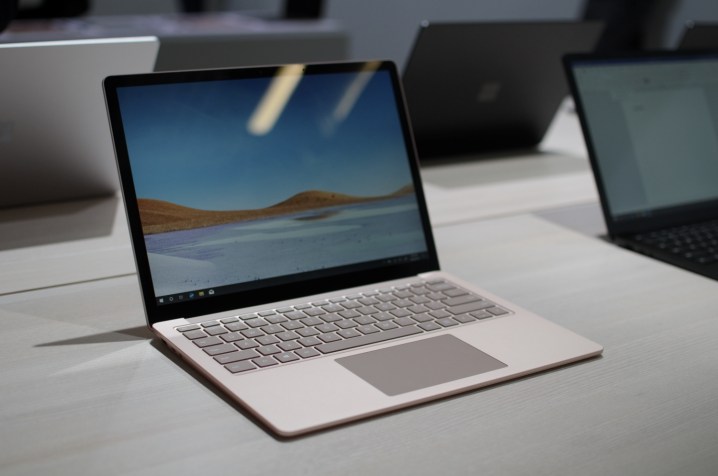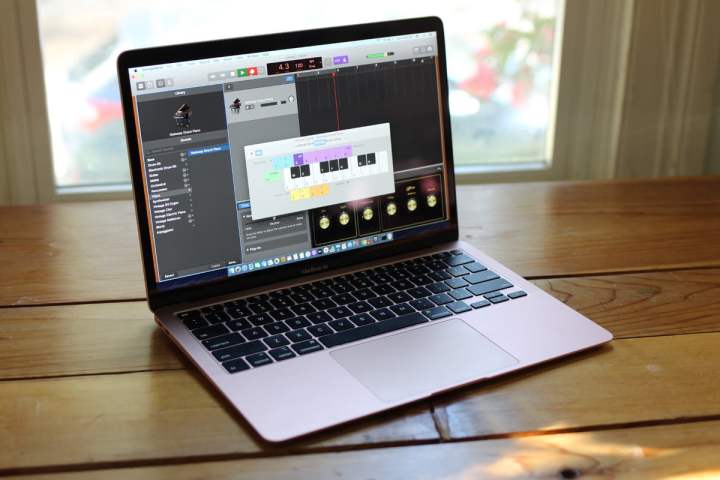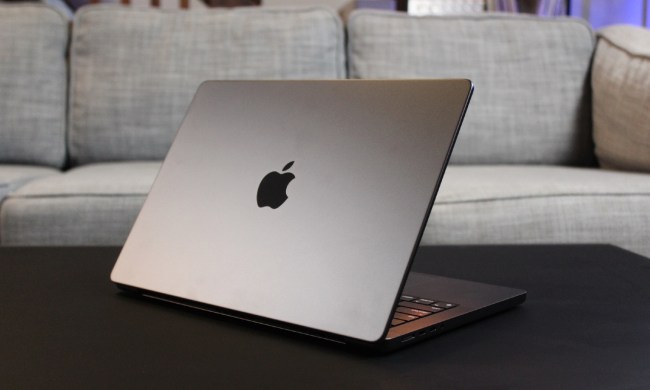If you’re after a 13-inch laptop with solid performance, Apple and Microsoft both have offerings designed to tempt your wallet. The eternal rivalry of these venerable tech giants sees the MacBook Air go head-to-head with the Surface Laptop 3. But which is the better device? That’s the score we aim to settle.
Design

The MacBook Air resembles the original version, albeit with a slightly thinner chassis and smaller bezels. It fits Apple’s usual design aesthetic that’s elegant and not at all ostentatious. It’s available in Gold, Silver, and Space Gray colors accented by black bezels.
The Surface Laptop 3 sports a few changes over its predecessor. These include a slightly larger trackpad and the introduction of all-metal chassis in addition to the usual Alcantara fabric finish.
Both laptops are extremely well-built, with rigid aluminum chassis and zero flexing or bending. The MacBook Air is a bit thicker than the Surface Laptop 3 at 0.63-inches versus 0.57-inches. However, they weigh almost the same: The Air at 2.8 pounds versus 2.79 to 2.84 pounds across the three Surface units, depending on the finish.
The MacBook Air uses Apple’s new Magic Keyboard, which swaps out the troublesome butterfly switches with scissor switches for a better typing experience. The Surface Laptop 3’s keyboard has significantly more travel and is just as snappy, making it by far our preferred input option.
The MacBook Air’s huge Force Touch touchpad is excellent, while the Surface Laptop 3’s smaller Precision touchpad is good but can’t quite keep up — Microsoft certainly could have been a little more generous with its size. Microsoft’s laptop benefits from a touch display and Surface Pen support, though, making it more flexible.
Connectivity is another significant difference. The MacBook Air has just two USB-C ports that support Thunderbolt 3 for transfer speeds of up to 40Gbps. The Surface Laptop 3 has a USB-A port, a USB-C port, and a Surface Connect port for charging and docking. The lack of Thunderbolt 3 makes Microsoft’s laptop less flexible in terms of external display and GPU enclosure support, but you won’t need as many dongles.
Performance

The MacBook Air is now built around Apple’s new ARM-based eight-core M1 processor that’s significantly faster than the two 10th-generation Intel Core i5 and i7 chips in the Surface Laptop 3.
| Single-Core Score | Multi-Core Score | |
| Apple M1 | 1690 | 7302 |
| Core i7-1065G7 | 1293 | 4878 |
| Core i5-1035G7 | 1208 | 4470 |
Although a single benchmark doesn’t tell the whole story, these numbers suggest that whether you’re browsing the web, editing video, or crunching numbers on a big spreadsheet, the M1-equipped MacBook Air should be much faster.
However, all desktop software initially developed for Intel-based chips must now run on the Rosetta 2 emulator built into MacOS Big Sur. On the flip side, MacBook Air owners should now see a more robust library in the Mac App Store.
Storage performance is also a win for the MacBook Air. Both machines rely on fast PCIe solid-state drives (SSDs), but Apple tends to source the absolute fastest SSDs available. The MacBook Air is, therefore, faster in accessing and saving data, although the difference in real-life use will be minimal unless you’re dealing with very large files.
Display quality is an area where Apple and Microsoft both excel — at least, that’s usually the case with MacBooks. Apple’s laptops typically enjoy superior displays with wide and accurate colors, excellent contrast, and high brightness. However, the MacBook Air is a bit of an exception given its average scores across the board in spite of its 2560 x 1600 resolution.
But here, too, Microsoft’s device is something of a letdown. Its 2256 x 1504 display is plenty sharp, but its disappointing color accuracy can’t compete with devices like the MacBook Pro or Dell XPS 15.
Portability

Neither of these laptops will weigh you down or consume loads of backpack space given that they have almost identical weights.
Technically, the matte black Surface Laptop 3 unit is slightly heavier than the MacBook Air at 2.84 pounds while the Cobalt Blue and Platinum units weigh slightly less at 2.79 pounds. However, in real-world use cases, these numbers are irrelevant, as you won’t feel a difference between the two.
The same goes for their dimensions. The MacBook Air measures 0.63 inches thick while the Surface Laptop 3 is thinner at 0.57 inches. Overall, however, you’ll be happy carrying either of these laptops around.
While we have yet to test the new MacBook Air with Apple’s M1 chip, the previous model with an Intel CPU hit very average battery life, at about 9.5 hours of web browsing and 10 hours of video watching in our review. The Surface Laptop 3, meanwhile, managed seven to eight hours in light usage. Our review unit was the 15-inch Surface Laptop 3 rather than the 13-inch variant, but Microsoft gives identical battery life estimates on its website.
Apple’s MacBook Air proves that performance counts

The MacBook Air boasts 8GB of RAM and a 256GB SSD for the starting price of $999. However, the Surface Laptop 3 comes at the same price and with the same amount of memory and storage setup.
If you want to go all out, $2,049 will get you a MacBook Air with an eight-core GPU (seven-core on the base unit), 16GB of memory, and 2TB of storage. For a little bit less ($1,899), you can get the Surface Laptop 3 with an Intel Core i7 chip, 16GB of memory, and a 1TB SSD.
For us, the overall winner of the competition is the MacBook Air. While the Surface Laptop 3 has an incredible design, the M1 chip in Apple’s MacBook Air ensures that it goes straight to the top. Neither are cheap, especially when you ramp up the configurations, Both are expensive as you ramp up the configurations, but they’re worth every penny.
Apple MacBook Air
Microsoft Surface Laptop 3


